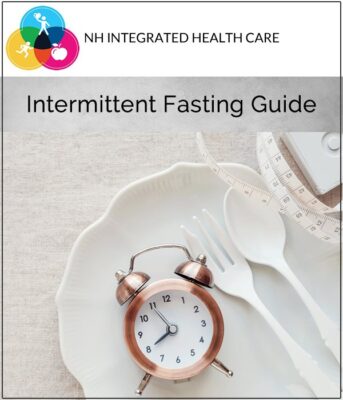Historians believe our ancient ancestors practiced intermittent fasting naturally, as food sources and daylight were limited. Our earliest ancestors did not have a refrigerator or cupboard to open in the morning to get their food. They probably had to get up and move and look for a food source.
Animal studies suggest intermittent fasting can reduce the risk of metabolic diseases and obesity. Our bodies utilize sugar first for energy, storing the excess as glycogen in the liver and muscles as fat. Intermittent fasting encourages the body to burn up more fat cells for fuel.
Somatotropin, the human growth hormone (HGH), is important to many physiological functions, but we produce less of it as we get older. This decrease correlates with symptoms of aging such as lower energy. However, fasting naturally elevates HGH levels. Levels of the hormone rise significantly within 13 hours of fasting.
Intermittent fasting does not necessarily mean you eat one day and the next you don’t. Even though there are various types of intermittent fasting diets out there the one that makes most sense to this Registered Dietitian is the 16:8. This is where you wait about 16 hours between the last meal of the day and the first meal the next day. You are only eating in a window of approximately eight hours per day. During the eight-hour eating window, it is essential to eat enough nutritious whole foods to make feel satiated but not overstuffed.
In fact, your first meal of the day should be a “stick to your ribs” type of meal such as scrambled eggs with an ounce of whole milk cheese and onions and/or spinach. This will allow you to go longer without being hungry. In addition, one would gradually increase the number of days that they practice 16:8. It takes time for the body to adjust to this type of change. In addition, you still want to practice reducing or avoiding too much carbohydrate especially processed bready carb and eating more “real food” like lean meats, and fresh fruits or vegetables.
If your last meal of the day is 7:00 pm then 7:00 am is 12 hours and thus 11:00am would be your first meal of the day. Again, you should try to only eat during your eight-hour window. As a Registered Dietitian I practice this type of meal plan as much as I can. I tend to get up, have coffee and work on my computer and then run/bike and/or lift weights and then I eat my first meal of the day, typically about 16 hours after my last meal of the day.
This meal plan is not for everyone including people with diabetes and on insulin. You should always check with your health care provider and and/or your certified diabetes educator (CDE) to see if this meal plan is right for you. Your best bet is to make an appointment with a licensed Registered Dietitian to learn whether you’re a good candidate for this meal plan. Most private insurance will cover your visit if the Registered Dietitian is contracted with them with no referral typically needed.
Check out our Intermittent Fasting Guide…


